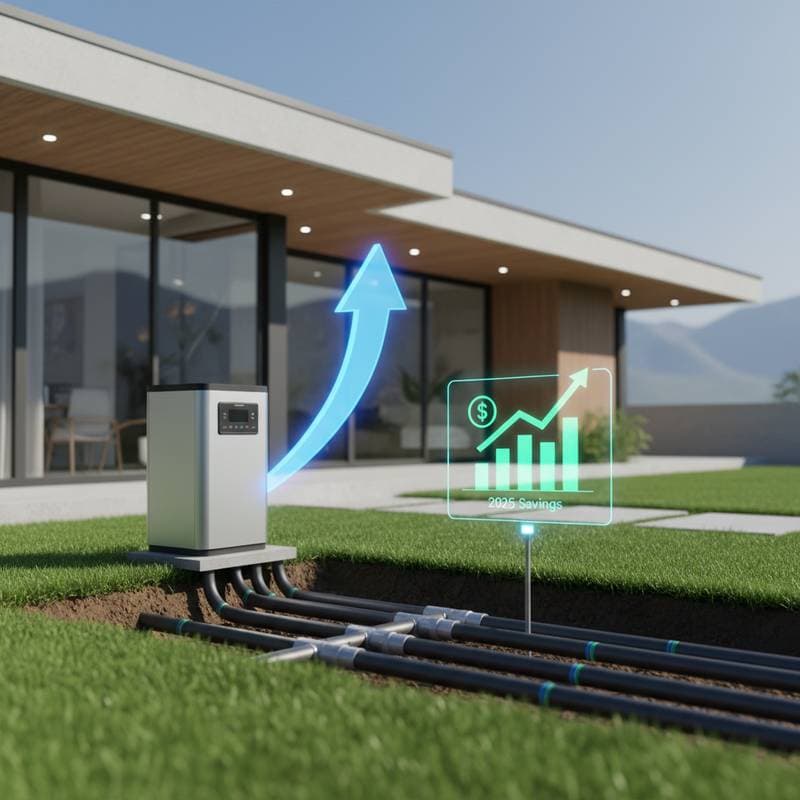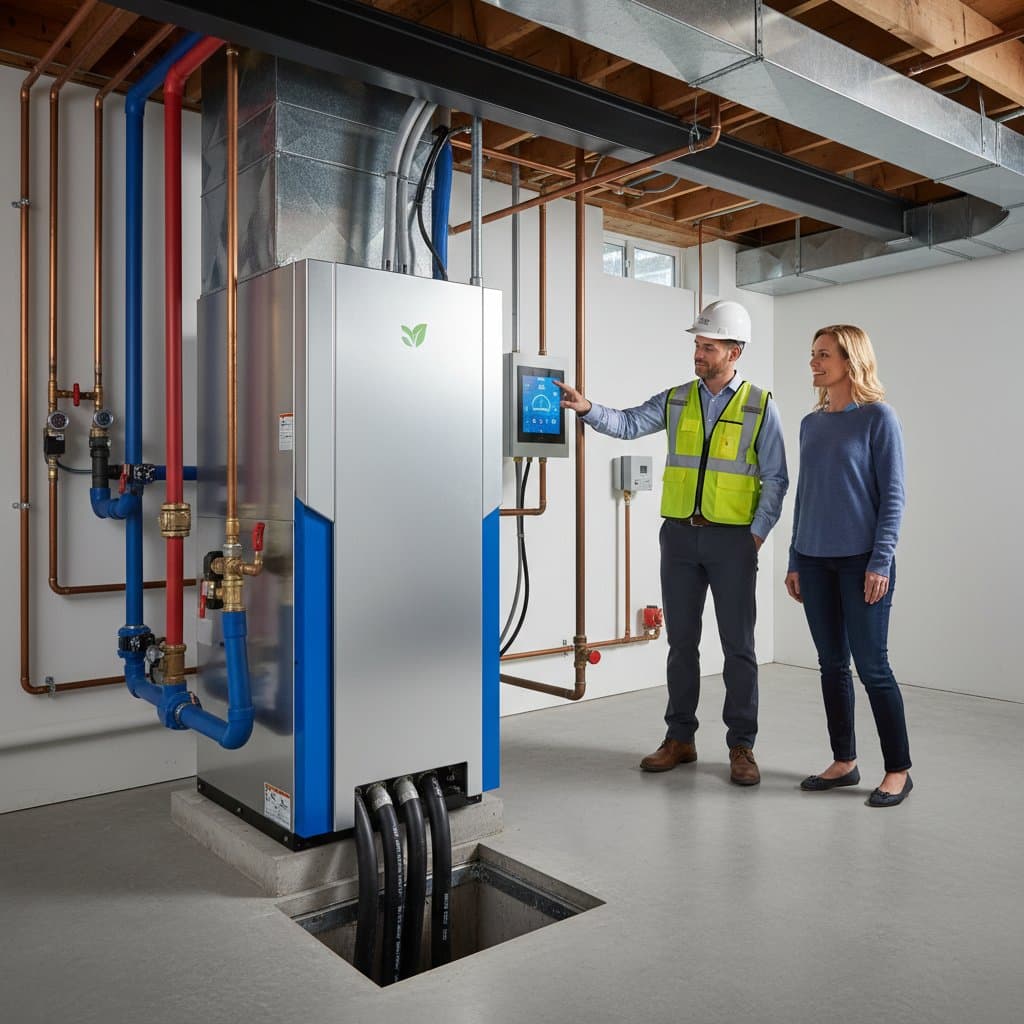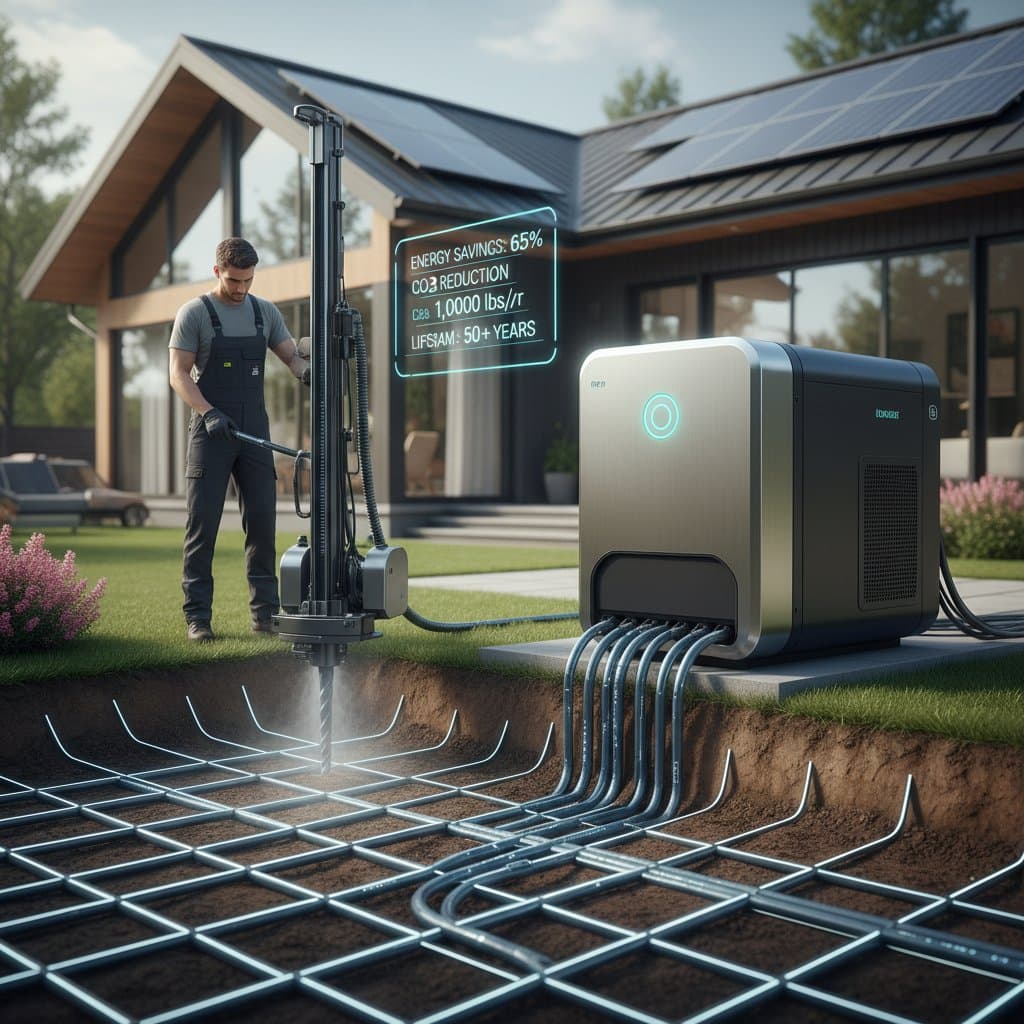Slash Your Cooling Costs with Ground Source Heat Technology
Imagine stepping into your home after a sweltering day and being greeted by a steady, cool calm instead of a noisy, overworked air conditioner. Ground source heat, often referred to as geothermal cooling, harnesses the earth's consistent underground temperature to reduce cooling costs by up to 50 percent for many homeowners. This technology not only trims utility bills but also extends equipment lifespan and cuts greenhouse gas emissions. If soaring energy rates have you reconsidering your HVAC options, this guide will explore why geothermal systems are a smart choice in 2025, recent market advancements, and how to assess, finance, and install a system tailored to your property.
Understanding the Power of Geothermal Cooling
At modest depths, the ground maintains a stable temperature, averaging around 50 degrees Fahrenheit across much of the continental United States. This acts as a natural thermal battery, absorbing heat during cooling mode and supplying warmth during heating mode. A closed loop of polyethylene pipe circulates a water-glycol mixture, allowing a heat pump to transfer indoor heat into the fluid, which the ground then absorbs. This process reverses for heating, delivering efficiency metrics like a Coefficient of Performance (COP) of 3.5 to 5.0, meaning you get three to five units of cooling or heating per unit of electricity used, far surpassing traditional air conditioners.
What is New in 2025 for Geothermal Systems
Reduced Equipment Costs
Advancements in manufacturing efficient scroll compressors and streamlined loop design software have driven down the cost of geothermal systems. Residential installations are now more affordable than in previous years, making this technology accessible to a broader range of homeowners.
Enhanced Incentives and Rebates
Federal tax credits for qualified geothermal installations remain a significant benefit, alongside state and utility rebates that vary by region. Always confirm pre-approval requirements for these programs before signing a contract, as documentation is often needed upfront to secure savings.
Smarter Integration
Modern geothermal systems now integrate seamlessly with solar panels, battery storage, and adaptive smart thermostats. This synergy reduces reliance on grid energy, enhances overall efficiency, and improves the long-term financial return on your investment.
Assessing Your Property for Geothermal Installation
Before diving into installation, evaluate your property with this quick feasibility checklist, then consult a certified professional for precise sizing and permitting.
- Available Space: Horizontal loops require 400 to 600 square feet per ton of capacity, while vertical boreholes suit smaller lots with a footprint of 150 to 200 square feet per ton, depending on soil conditions.
- Soil Conductivity: Test your soil's thermal conductivity; values above 1.0 watts per meter Kelvin are ideal, while lower values may necessitate longer loops.
- Water Access: Ponds or lakes can be cost-effective for open-loop systems if local regulations permit.
- Current HVAC Load: Conduct a Manual J load calculation to match system capacity to your home's actual needs, avoiding inefficient oversizing.
Budgeting and Financing Your System
Installed costs for geothermal systems have become more competitive in 2025, often fitting within standard home improvement budgets. Federal tax credits cover a percentage of installation costs, and many states offer additional per-ton incentives. Explore low-interest green loans or on-bill financing through credit unions, some of which provide zero-percent introductory rates. For a typical three-ton system replacing an outdated air conditioner, expect cooling electricity savings of 30 to 50 percent, yielding a payback period of 4 to 10 years when paired with incentives.
Key Installation Tips for Optimal Performance
When reviewing contractor proposals, prioritize these best practices to ensure efficiency and longevity.
- Insist on a Manual J calculation for accurate sizing, targeting a 90 percent load match.
- Verify loop field integrity with pressure testing post-installation.
- Seal and right-size ductwork to maintain airflow and minimize energy waste.
- Request formal commissioning with a System Efficiency Report showing real-world COP and EER values.
Maintenance for Lasting Value
Geothermal systems are built to last, with indoor heat pumps enduring 25 to 30 years and buried loops exceeding 50 years with proper care. Perform annual fluid checks, pressure test loops every five years, and replace filters biannually. Schedule professional servicing every two years to maintain warranty coverage, keeping annual maintenance costs low, often under a few hundred dollars.
Real-World Impact and Insights
Consider a mid-sized ranch home in a hot inland region that swapped an aging air conditioner for a vertical-loop geothermal system. The homeowner slashed cooling electricity costs by 50 percent, repaid a zero-interest green loan in five years, and enjoyed quieter, drier indoor comfort. A Nevada-based contractor noted that clients often notice reduced bills in the first summer, alongside improved comfort and equipment durability. Measured performance data ensures these savings are verifiable, fostering trust in the technology.
Taking the Next Step Toward Savings
Start by screening your site for land availability and existing HVAC age. Request proposals from at least three certified installers, ensuring they provide references from similar projects. Apply for incentives before breaking ground, and secure financing if upfront costs are a concern. With careful planning and professional execution, a geothermal system can deliver decades of low-cost, low-carbon comfort to your home.








